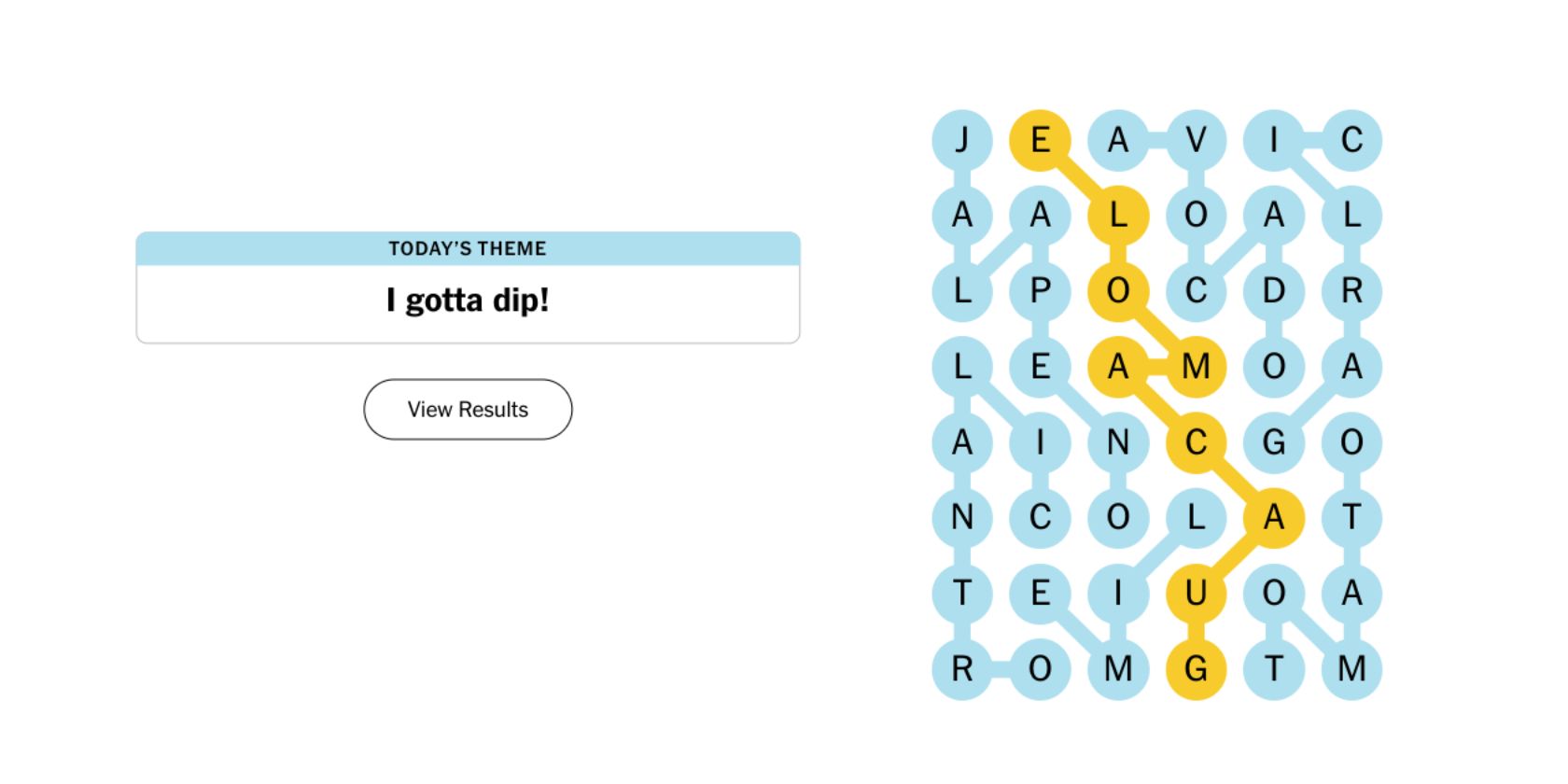Quick Links
Key Takeaways
- Strands by the New York Times is a daily word search game with a couple of simple-yet-effective twists.
- To complete each Strands puzzle, tap letters to form words that match the theme of the day.
- Tips for success include considering the clues carefully, starting in the corners, and obtaining hints if needed.
Since Wordle became a global phenomenon, word games have been very much in fashion. The latest to hit the web is Strands, a new daily puzzle game from the New York Times. It's a word search game with a difference, and you'll likely find it surprisingly addicting given its simplicity.
What Is the Strands Game by the New York Times?
Strands is a take on the classic word searches we all spent time solving as children. You get a grid of 48 letters in a 6x8 formation, and a short, singular clue to work with. It's then your job to find all the words that fit the theme the clue is hinting at, including the "spangram". This is the core word that describes the puzzle's theme and touches two sides of the board. Hence, the "span".
You simply tap on letters in turn or drag your finger across multiple letters to form words. If you find a correct word, it turns blue (or yellow in the case of the spangram), and you move onto the next one. If you get it wrong (meaning you find a word that isn't part of the theme), you'll earn hints. Three wrong words equal one hint.
Like with the best Wordle puzzle alternatives, the rules are simple, but the puzzles themselves are not. While Strands isn't as mentally taxing as Connections, another NYT game that this writer plays on a daily basis, it will still get your gray matter working.
At the time of writing, Strands is in beta, which means it's merely being tested to see if it stands up to scrutiny. On a practical level, that beta assignation means it's only available to play on the web and is not yet part of the New York Times Games app.
How to Play the NYT's Strands Word Search Game
- To play Strands, first, go to the Strands page on the New York Times website and click Play.
- Read and take notice of Today's Theme, which is essentially a clue to help to complete the puzzle.
- With some idea of the theme in mind, scan the grid for words that fit the bill—especially the spangram.
Now that you have the puzzle open and start seeing words, here's what you need to do guess the spangram.
- Once you see a word, either tap each letter in turn, double-tapping the last one, or tap and drag each letter to form a word.
- If the word is correct, it will turn blue (or yellow in the case of the spangram). Continue finding words that fit the theme until the whole board has been filled.
- You'll then be shown your results, with little emojis representing your experience. You can also share your results with other people without giving any spoilers away.
Tapping and dragging letters to form words with a mouse can be frustrating. If you're playing Strands on a non-touchscreen device, we recommend tapping each letter in turn.
5 Quick Tips to Succeed at Strands by the NYT
- Consider the clue carefully. Unlike conventional word searches, there's no list of words to look for. This means tuning into the theme for that day is crucial if you want to succeed.
- You need to fill the board completely. This rule of the game is helpful, as once you have uncovered some words, others will appear within the gaps left behind.
- Guess incorrect words to get hints (if needed). While this goes against the instincts of puzzlers, if you need a hint, try finding three random words on purpose to earn a hint.
- Start in the corners to limit the possibilities. While a letter in the middle of the grid could go in any of eight directions, corner letters are limited to just three options.
- Words can be formed in any direction. Classic word search answers follow straight lines, whereas Strands words snake around the board horizontally, vertically, and diagonally.
Often, the simplest games are the best. And puzzle games don't come any simpler than word searches. However, Strands makes this classic puzzle much more interesting with a couple of simple yet effective twists.

